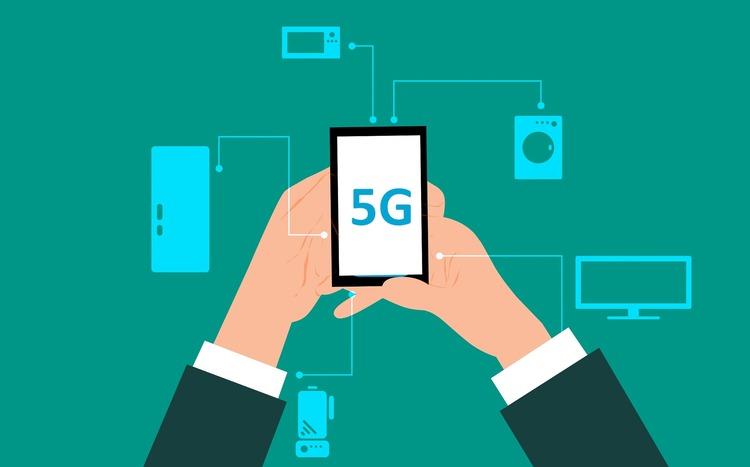The First 5G Video Call Is a Step Toward a Fast, Flexible Future
.jpg)
According to Chinese astrology, we’re living in the year of the pig.
According to Chinese technology, we’re living in the year of the 5G smartphone.
Chinese scientists ended 2018 by making the world’s first group video call on a smartphone using an advanced 5G mobile connection, and their achievement serves as an overture to the arrival of next-generation phones throughout 2019.
While the feat was completed within lab conditions, it’s only a matter of months before 5G mobiles start hitting stores, bringing with them high speed, low latency, power-enhanced video calls that outperform current models by more than 20 times.
The resulting 5G video calls you could be enjoying by year’s end will not only have better resolution and frame rates, they’ll also be able to incorporate more virtual and augmented reality and more artificial intelligence. They’ll also have increased connectivity and stability.
All this means it’s possible that 2019 will be the year of the 5G video call.
The 5G Difference
The 5G video call made by engineers at the Chinese mobile company Oppo is one of several tests that have demonstrated the potential power of the next generation of networks. The 17-minute call between six people was made on a prototype 5G smartphone under lab conditions. That sounds rather sterile, but it is backed by a pledge to release a commercial 5G-capable phone in 2019.
The experimental call is significant because it proves the stability of broadcasting across higher frequencies, which is necessary to make 5G mobile networks operate. The technology to access these higher frequencies–which are relatively ignored by commercial devices and so can be given over to large channels–requires both a network of small, low-power base stations (many of which are already in operation) and a handheld device with enough processing capacity and the right antenna to make use of the new signals. The Oppo test is proof that the last condition can be met.
It’s not the only proof, either. In mid-2018, Voxon Photonics unveiled a devicecapable of sending 3D medical images over a 5G mobile connection, essentially enabling holographic telemedicine. In December of the same year, Qualcomm, Motorola, and Verizon teamed up to send a gigabyte of data across a 5G connectionin 17 seconds. That’s about five times faster than the average U.S. broadbandconnection and about ten times faster than a 4G mobile network.
What’s far more exciting than these lab tests is the fact that Oppo isn’t alone in promising to deliver a 5G-capable smartphone in 2019.
2019: The Year of the 5G Phone
The biggest smartphone news of 2019 is going to center around Apple’s release ofthree new iPhones. For once though, the tech giant isn’t going to be at the forefront of technology. It has already stated it won’t be entering the 5G field until at least 2020. So that gives everyone else the chance to get in first–and lots of companies are trying to seize the momentum.
Here are just a few of the brands that have made promises to tap into 5G this year:
- LG V50: Expected to be launched the end of February
- Sony Xperia XZ4: This phone could also feature a battery that lasts a week
- Xiaomi Mi MIX 3: A European launch is expected in the first quarter of 2019
- Honor 5G: The Honor View 20 was the slickest design to hit CES 2019, and a 5G model is due in March.
- Samsung Galaxy S10: Officially put on display in December 2018, the unit will be the first to support multi-gigabyte 5G.
This rush to the 5G market coincides with the rollout of next-generation networks on the ground. Verizon, AT&T, T-Mobile, and Sprint all have some version of 5G network coverage in place in the U.S. already, although some networks’ services, like AT&T’s “5G Evolution,” aren’t 5G, merely upgrades to 4G.
Still, all this forward momentum means it’s time to start thinking about what 5G group video calls like the one Oppo just completed are going to be like once they reach consumer standards.
What Is Possible with a 5G Video Call?
The promise of 5G does come with one word of caution. As we stated in our technology predictions for 2019, the arrival of all this 5G technology is going to be a bit of a tease. While the hardware is nearing completion, it could be years before the software and apps are able to catch up and make full use of its potential.
Once they do, though, we’ll be in for quite an experience. 5G moves more data, faster than 4G, but also beats it in coverage and connectivity. The result should be higher quality video calls with greater stability, less delay, and in more places than we’ve previously known. That might mean a 4K video call with friends from a remote field that’s been transformed into a music festival. It could mean shared live streams from that same festival overlaid with virtual reality that makes it seem like our friends are with us in the teeming crowd even though they’re miles away in their bedrooms. It’s 3D and holographic projections that transport the performers in these live streams into our living rooms for a private concert.
There isn’t much you can imagine wanting from a video call that can be ruled out of the 5G spectrum. A few years after 4G was launched, for instance, Snapchat and Instagram transformed the visuals of social media by taking advantage of this new mobile capacity. A similar video calling revolution could ride the 5G wave to prominence.
What Oppo’s engineers have started in their lab is the first small step toward a whole new visual form of communication.
source videoconferencingdaily
Industry: Unified Communications News
